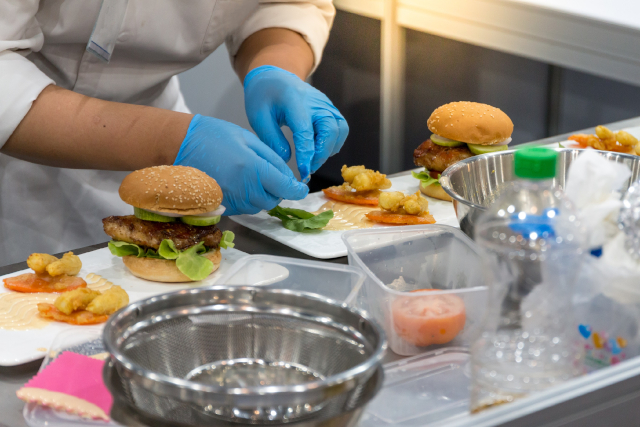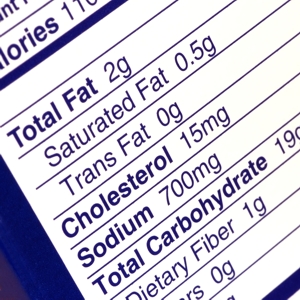Even with the latest computers, it takes a surprisingly long time to analyse data from huge public opinion surveys. And there was the disruption during the pandemic lockdown. But only now is the U.S. FDA ready to release results of a 2019 info-gathering exercise…
 Consumers think food prepared at home is safer than food prepared at a
Consumers think food prepared at home is safer than food prepared at a
restaurant. This, in spite of the fact that restaurants and foodservice
facilities are required to follow stringent safety practices…
It’s only data until it’s analysed. Then it’s results, which can be interpreted and acted upon. So now we have the results of a 2019 survey by the U.S. Food and Drug Administration (FDA), which probed Americans’ (and, by association, Canadians’ and folks’ from other Western Nations) attitudes about Food Safety and Nutrition.
What they did
The U.S. Food Safety and Nutrition Survey (FSANS) is a national consumer survey designed to assess consumers’ awareness, knowledge, understanding, and self-reported behaviors relating to a variety of food safety and nutrition topics. Each respondent was randomly assigned to one of the two versions of the survey — food safety or nutrition. Some overlapping questions were asked on both versions. To make the exercise easier without sacrificing detail or accuracy, the FDA selected households to participate according to where they lived across the country and asked them to complete the survey online, at a special FSANS website during October and November of 2019.
In the end, 4,398 responses were collected.
What they found
Key findings from the food safety questions
- Consumers think people are more likely to get a foodborne illness from food prepared at a restaurant than food prepared at home – Few respondents, 15 percent, thought it was “very common” for people to get food poisoning because of the way food is prepared at home, compared to 29 percent who thought it was “very common” to get food poisoning because of the way food is prepared in restaurants.
- Consumers are more concerned about raw chicken and raw beef than raw vegetables or fruit being contaminated – More respondents thought that raw chicken, 93 percent and raw beef, 66 percent were “likely or highly likely” to have germs than raw vegetables, 9 percent or fruit 6 percent.
- Consumer awareness of germs varies greatly depending on the type of germ – Awareness is high for Salmonella at 97 percent and E. coli at 88 percent but comparatively low for Campylobacter at 7 percent and Vibrio at 4 percent.
- Hand washing practices vary depending on the occasion – Consumers are more likely to wash hands with soap after touching raw meat, 76 percent, than before preparing food, 68 percent or after cracking raw eggs, 39 percent.
- The majority of consumers own a food thermometer, but usage varies depending on what is being cooked – Sixty-two percent of respondents reported owning a food thermometer. Usage among those who own food thermometers and cook the food ranges from 85 percent for whole chickens and 79 percent for beef, lamb or pork roasts, to 40 percent for chicken parts, 36 percent for burgers, 23 percent for egg dishes, and 20 percent for frozen meals.
Key findings from the nutrition questions
- Most consumers are familiar with the Nutrition Facts label – 87 percent of respondents have looked at the NFL on food packages. The top four items that consumers look for on the label are Calories, Total Sugar, Sodium, and Serving Size. Consumers report using the label most frequently for seeing “how high or low the food is in things like calories, salt, vitamins, or fat,” “for getting a general idea of the nutritional content of the food,” and “to compare different food items with each other.”
- Consumers are familiar with food package claims – More than 80 percent of respondents have seen claims such as “No added sugar,” “Whole grain,” “Organic,” “Gluten-free,” “Low fat,” “No artificial ingredients,” “Low sugar,” and “No artificial colors.”
- Most consumers have seen menu labeling at restaurants – Most respondents, 70 percent reported that they have seen calorie information on menus and menu boards. Of those who have seen such information, 53 percent reported using the calorie information, and most often indicated using it to avoid ordering high-calorie menu items.
My take
Okay.
Consumers think food prepared at home is safer than food prepared at a restaurant. In my food safety training at culinary school, it as revealed that the majority of food poisoning incidents people suffer over a given year are the result of campylobacter infections they picked up at home. This, in spite of the fact that restaurants and foodservice facilities are required to follow stringent safety practices and folks at home pretty do much do as they please.
In my food safety training at culinary school, it as revealed that the majority of food poisoning incidents people suffer over a given year are the result of campylobacter infections they pick up at home.Campy infections are, in fact the most common source of food poisoning, but they often go unnoticed because they cause only relatively minor discomfort and occasionally the runs. What folks mistakenly call the ’24-hour flu’.
Consumers are more concerned about raw chicken and raw beef than raw vegetables or fruit being contaminated. This in spite of the fact that the vast majority of food recalls over the past decade have been the result of infection by Salmonella, E.coli or other serious bacterial agents that are much less common but have much more serious consequences.
Handwashing – the single most important activity in controlling cross-contamination of foods during preparation – is considered by consumers to be a higher or lower priority depending on the activity they’re involved in. That shoes a fundamental misunderstanding of why we wash our hands. Not to mention cleaning or changing cutting boards between prep sessions involving different kinds of foods.
Almost 2/3 of survey respondents reported owning a food thermometer. But they didn’t use it consistently. Usage ranged between 85 percent when cooking whole chickens, and 20 percent when re-heating frozen meals. The sad truth is, al foods should be cooked to a minimum safe temperature that al restaurants observe. And frozen foods should always been heated all the way through to at least 165 F. The FDA, other government food authorities, food bloggers – even TV coking show hosts – have been telling people this for years. But the message apparently hasn’t sunk in.
Perhaps most amazing to me is, consumers reported being highly aware of Nutrition Info Labels and other nutrition information cues available to them on product labels and restaurant menu. Yet, the information doesn’t seem to have sunk in.
The takeaway
My analysis, anyway: It’s not enough to provide food safety and nutrition information to the public. Something has to be done to encourage consumers to use it!
~ Maggie J.

